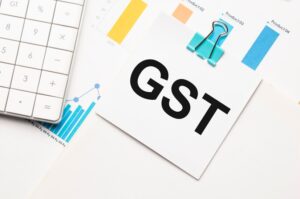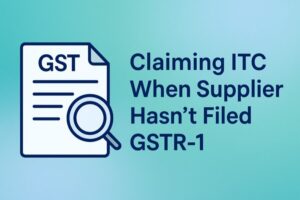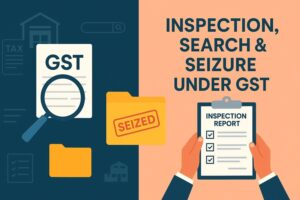Incentives of Exporting from India: Types and Advantages for Exporters
- 9 Aug 24
- 17 mins

Incentives of Exporting from India: Types and Advantages for Exporters
Key Takeaways
- Export incentives are crucial for enhancing the global competitiveness of Indian exports by reducing production costs and mitigating risks associated with exporting.
- These incentives play a vital role in stimulating economic growth through increased export volumes, contributing to higher foreign exchange earnings.
- By encouraging businesses to explore and enter new international markets, export incentives help diversify market exposure and reduce dependence on domestic sales.
- Export incentives are instrumental in creating employment opportunities across various sectors by boosting production to meet export demands.
- The strategic framework of export incentives in India is designed not just as financial support but as a catalyst for innovation, quality improvement, and sustainable economic development.
Introduction
As India has become a more active player in the complex web of global trade, its goods and services have become a part of many foreign markets. At the heart of this global reach is a carefully planned set of export benefits put together by the Indian government to make Indian goods more competitive.
These incentives aren't just ways to get money; they're the lifelines that help exporters confidently and quickly manage the tricky waters of international trade.
India's export benefits go beyond the usual definitions of trade support. As a leading power in global trade, this vision is like a dream of making India's goods and services stand out on the world stage, wowing people with their quality, availability, and creativity.
The goal is to make India's economy grow not only in India but also around the world, becoming a center of trade and creativity that lights up markets everywhere.
By mitigating the myriad costs associated with exporting, these incentives serve as catalysts that propel Indian goods to distant shores, opening up a world of opportunities for businesses and entrepreneurs alike.
What are Export Incentives?

Export incentives are financial aid or other measures that governments use to get companies in their own country to sell goods and services abroad. It's like a gentle push from these benefits to start exporting. They make it more appealing and also smart from a financial point of view. They are meant to boost India's exports, help the country earn more foreign currency, and make its own businesses more appealing to people around the world.
The main reason for these benefits is to make things fair for exporters. People who are fighting against high production costs, taxes, and duties that can make their products less visible on the global stage are given a helping hand. This makes sure that their products have the chance to shine just as strongly as their international competitors.
Types of Incentives for Exporters in India
India warmly extends a variety of export benefits, all thoughtfully crafted to elevate its trade presence on the world stage. These incentives are like a supportive hand, helping to lighten the load of operational costs for exporters, shielding them from the uncertainties of international trade, and inspiring businesses to venture beyond familiar shores into new global markets.
It's a nurturing approach, designed to ensure Indian products and services can shine brightly and compete effectively across the globe, opening doors to endless possibilities and fostering connections that span continents. Here's an overview of the key types of export Schemes available for exporters in India:
1. Service Exports from India Scheme (SEIS)
Objective: The SEIS aims to promote the export of services from India by providing incentives to service providers.
How It Works: Under SEIS, service exporters are eligible to receive rewards in the form of duty credit scrips. These scrips are a type of credit that can be used to pay customs duties on imported goods or can be sold to other importers. The rate of reward varies between 3% to 7% of the net foreign exchange earned, depending on the type of service provided.
Eligibility: It covers a wide range of service sectors such as business, healthcare, education, and hospitality services. The scheme specifies certain eligibility criteria, including a minimum amount of foreign exchange earnings.
2. Rebate of Duties and Taxes on Exported Products Scheme (RoDTEP)
Objective: RoDTEP aims to refund the duties, taxes, and levies at the central, state, and local levels that are not rebated under any other existing scheme, thereby making Indian products cost-competitive globally.
How It Works: This scheme provides for a rebate of various central excise duty and state taxes on exported products which were previously not refunded. The rebate is credited in the form of a transferable duty credit/electronic scrip, which can be used to pay basic customs duty on imported goods.
Eligibility: All export goods are eligible for the benefits under RoDTEP, subject to certain exclusions specified by the government.
3. Export Promotion Capital Goods Scheme (EPCG)
Objective: The Export promotion scheme encourages the import of capital goods for producing quality goods and services and enhancing India's manufacturing competitiveness.
How It Works: Under this scheme, capital goods can be imported at a zero customs duty rate, subject to an export obligation. This means that the importer must export goods worth a specific multiple of the value of the capital goods imported within a specified period.
Eligibility: Manufacturers and service providers are eligible to apply for the EPCG scheme, provided they fulfill the export obligation criteria set under the scheme.
4. Rebate on State and Central Taxes and Levies Scheme (RoSCTL)

Objective: RoSCTL aims to provide a rebate on central and state taxes, levies, and duties to exporters of garments and made-ups, making Indian textiles more competitive in international markets.
How It Works: This scheme offers exporters of textiles a rebate in the form of duty credit scrips for the taxes paid, such as VAT on fuel used in transportation, duties on electricity used in manufacturing, and any central taxes that are not refunded through GST.
Eligibility: Exporters of garments and made-up textiles are eligible for this scheme. The rebate rates and eligibility criteria are specified by the government.
5.Advance Authorization Scheme (AAS)
Objective: The AAS is designed to allow duty-free import of inputs, which are physically incorporated in the export product (making normal allowance for wastage). Additionally, fuel, oil, energy, catalysts etc., which are consumed in the course of their use to obtain the export product, can also be imported duty-free under the scheme.
How It Works: Under AAS, exporters are granted an authorization to import the inputs required for manufacturing goods for export without paying the standard import duties, IGST, and compensation cess. This scheme is contingent upon the exporter achieving a specific export obligation within a stipulated time frame, typically 18 months.
Eligibility: Exporters of goods are eligible for this scheme. The scheme mandates that the inputs imported under AAS must be used for the production of export goods.
6. NIRVIK Scheme (Niryat Rin Vikas Yojana)
Objective: The NIRVIK scheme aims to provide enhanced loan availability and eased lending criteria for exporters, ensuring comprehensive coverage under Export Credit Insurance for Banks (ECIB) by the Export Credit Guarantee Corporation (ECGC).
How It Works: This scheme offers high insurance cover for export credit, reduced premiums for small exporters, and simplified procedures for claim settlements. It provides up to 90% coverage of principal and interest for export credit. The scheme is designed to make Indian exports more competitive by lowering the cost of credit and by providing additional support in terms of coverage and claims.
Eligibility: Exporters who avail export credit from banks or financial institutions are eligible for coverage under this scheme.
7. Export Oriented Units (EOU) Scheme
Objective: The EOU scheme aims to promote exports by facilitating the import of inputs and capital goods for production, processing, or assembly of export goods without the burden of duties and taxes.
How It Works: Units operating under the EOU scheme are required to export their entire production of goods and services. They are allowed duty-free import of capital goods, raw materials, consumables, and parts. They may also be eligible for certain tax benefits and are subject to conditions such as achieving a minimum Net Foreign Exchange (NFE) earnings as a percentage of exports.
Eligibility: This scheme is open to manufacturers and service providers who can export their entire production of goods and services.
8. GST Refund for Exporters

Objective: To ensure that goods and services exported from India are not subject to GST rates, making Indian exports more competitive by relieving the tax burden.
How It Works: Exporters are entitled to claim a refund of the GST paid on goods and services exported. This refund mechanism ensures that products are not more expensive due to the inclusion of GST, thereby maintaining their price competitiveness in international markets.
Eligibility: All exporters of goods and services are eligible for a GST refund, provided they have paid GST on inputs or on the exported products and services.
9. Duty-Free Import Authorization (DFIA) Scheme
Objective: The DFIA Scheme is aimed at allowing exporters to import inputs used in the manufacture of export products duty-free, thus reducing their cost of production.
How It Works: Under this scheme, exporters are granted authorization to import inputs duty-free, provided these inputs are physically incorporated in the export product (with some allowance for wastage). The scheme also allows for the duty-free import of oil and catalysts which are consumed in the process of production of export goods.
Eligibility: Exporters of goods are eligible for this scheme, with the condition that they must export the finished goods under specific export obligations.
10. Duty Drawback Scheme (DBK) Scheme
Objective: The DBK Scheme aims to rebate duty or tax charged on materials used to manufacture goods that are subsequently exported. It's designed to ensure that products exported are not more expensive due to the taxes on their inputs.
How It Works: Exporters are refunded duties, taxes, and charges paid on imported or domestically procured inputs that are used in the manufacture of exported goods. The refund rates are determined based on the inputs used and the products exported.
Eligibility: Exporters who have paid duties or taxes on inputs used to manufacture exported goods are eligible for this scheme.
11. Duty Entitlement Passbook (DEPB) Scheme
Objective: The DEPB Scheme was designed to neutralize the incidence of customs duty on the import content of export products. The scheme provided credits to exporters, which could be used to offset customs duty on future imports.
However, it's important to note that the DEPB scheme has been phased out and replaced by other schemes like the Duty Drawback Scheme and the Merchandise Exports from India Scheme (MEIS).
12. Interest Equalisation Scheme (IES)
Objective: The IES aims to make Indian exports more competitive by reducing the cost of credit to exporters. It provides for a subsidy on the interest charged on pre-shipment and post-shipment export financing.
How It Works: The scheme offers an interest subsidy on loans taken by exporters from banks. The subsidy rate varies depending on the sector (MSME/manufacturing sector or merchant exporters) and the type of goods exported.
Eligibility: Exporters, particularly from the MSME sector and those involved in exporting identified sectors/products, are eligible for this scheme.
13. Market Access Initiative (MAI) Scheme
Objective: The MAI Scheme is designed to act as a catalyst to promote India's exports on a sustained basis by providing assistance for market expansion and export promotion activities in foreign countries.
How It Works: The scheme provides financial assistance for activities such as market studies, setting up showrooms/warehouses, participation in international trade fairs, and publicity campaigns in foreign markets.
Eligibility: Export Promotion Councils, Industry and Trade Associations, Agencies of State Governments, Indian Commercial Missions abroad, and other eligible entities can apply for support under this scheme.
14. Transport and Marketing Assistance (TMA) Scheme
Objective: The TMA Scheme aims to provide financial assistance for the transport and marketing of agricultural produce, thereby enhancing the competitiveness of Indian agricultural products in the global market.
How It Works: The scheme offers assistance in the form of subsidies for the transport of agricultural products and for the marketing of those products, including freight costs and marketing.
Eligibility: Indian exporters of eligible agricultural products are covered under this scheme.
Why Are Export Incentives Important?
Export incentives are a key part of many countries' economic growth plans, especially when it comes to making their industries more competitive on a global scale. These benefits are important for many reasons, affecting not only the exporters' current finances but also the economy as a whole. This is why export benefits are so important:
Improving Competition: Export incentives help exporters lower their production costs by getting rid of duties, taxes, and other fees that can make the price of shipped goods go up. By making exports more price competitive, these benefits help exporters compete on the world market with companies from all over the world.
Boosting Economic Growth: Exports are a key way to boost economic growth. Countries can get more foreign exchange by encouraging businesses to sell. This is important because countries need foreign exchange to buy goods and services. Additionally, an increase in exports may lead to more production, which in turn promotes economic growth and development.
Creating Jobs: More exports mean more production, which can lead to job creation in many areas of the business. More exports can help a lot of different businesses, from manufacturing to services. This can help lower unemployment rates and raise living standards.
Trade Deficits: To balance their trade accounts, countries with trade deficits can use export benefits to increase the amount of goods they send abroad. A trade surplus is often seen as a sign of a strong economy. Countries can work to get one by making their products more valuable than their imports.
Diversifying Market Exposure: Tax breaks for exports encourage companies to look for and join new markets, which makes them less reliant on sales in their own country. Diversification helps businesses lower their risks when one market's economy goes down, which leads to more stable income streams.
Promoting New Ideas and Better Quality: For exporters to succeed in global markets, they need to keep coming up with new ideas and making their products better. To help fund research and development, export benefits can be very useful. This can lead to the creation of better and more innovative goods.
Getting Foreign Investment: A strong export sector can bring in foreign investment, as investors look to take advantage of the country's export potential. Export benefits can make investments in these areas more appealing by lowering the costs of doing business and making export-oriented businesses more profitable.
Promoting the Use of Green Technologies: Some export incentives are meant to get people to use technologies and methods that are better for the environment. Countries can help protect the environment around the world by encouraging the sale of green technologies and goods. This way, they can also take advantage of the growing market for eco-friendly goods.
Helping Small and Medium-Sized Businesses (SMEs): SMEs often have a hard time getting into foreign markets because they don't have enough resources or knowledge of how to export. Export incentives can help small and medium-sized businesses get past these problems so they can become great exporters.
 By
By 

















